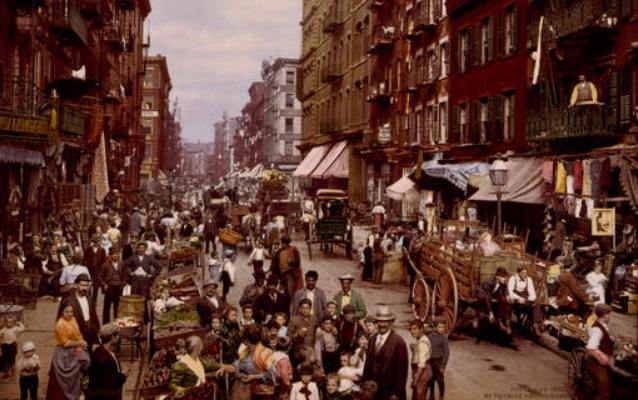Last updated: December 15, 2018
Lesson Plan
Finding a Home

- Grade Level:
- Middle School: Sixth Grade through Eighth Grade
- Subject:
- Social Studies
- Lesson Duration:
- 30 Minutes
- State Standards:
- Elementary:
Standard 4: lB, 1 C, lE
Standard 5: lB
Intermediate:
Standard 4: 1 C, lD, lE
Standard 5: lA, lC - Thinking Skills:
- Analyzing: Break down a concept or idea into parts and show the relationships among the parts. Creating: Bring together parts (elements, compounds) of knowledge to form a whole and build relationships for NEW situations. Evaluating: Make informed judgements about the value of ideas or materials. Use standards and criteria to support opinions and views.
Essential Question
What factors push people to live in certain areas when they move to a new country?
Objective
At the end of the lesson, students will be able to:
Describe some of the feelings immigrants faced when deciding on a new settlement in the United States.
Contrast the benefits and drawbacks of living in a new location when determining a place to live. Compare these benefits to the choices immigrants made in the past and present.
Formulate several reasons why immigrants elected to live in selected areas.
Preparation
- Pencils or pens
- Paper
- Location descriptions found in downloadable lesson plan.
- Refer to the oral interviews from the Ellis Island archives.
Procedure
Part 1:
Inform students that immigrants encountered very difficult choices when deciding where to go next. Mutual-aid societies persuaded them to go one-way. Whereas the lure of labor, and the opportunity to own land enticed them to go elsewhere. Split the class into groups of three or four. Inform them that they will act as their own mock family from Poland about to make the same decisions as immigrants did a century ago.
Part 2:
Distribute the family profile and advertisements/classifieds for each desired location. The descriptions depict three locations. Each offers a distinct advantage to relocating to that area. As immigrants from Poland, Location A offers a large ethnic community, but the employment prospects remain uncertain. Location B promotes ample farming opportunities, and opportunities to own land. This area has vast farmland, but very few people of your ethnic culture. It features little of what your family is used to. For someone who specializes in the building of railroads, Location C offers the greatest employment that matches your skill set, but train tickets are the most expensive of all the locations to move to.
Part 3:
For each part of the description read, the groups, as newly-processed immigrants, will determine the benefits and drawbacks of each proposed destination. Explain to the groups that they will have a fifty-dollar budget to make their decisions. Inform students that they will have about ten minutes to determine the best destination for their family; backing up their decisions with well-supported facts.
Things to consider:
- Is it more important to have readily-available employment, or a job that matches your skill-set. The best economic opportunity maybe the most expensive place to travel to by rail?
- What are some of the advantages that a newly-arrived immigrant family would find in their own ethnic community?
- What are the advantages of running your own business?
After all the groups have made their decisions, a discussion will follow providing a detailed analysis to why students decided to settle in that area.
- Why do you think having people from the same country (a sense of community) is important for newly-arrived immigrants?
- How do you think the decisions immigrants made in the past compares to the choices immigrants make today?
Part 4:
After the discussion, inform the groups of their elected destinations:
- Location A indicates that the group has decided to relocate to Chicago, Illinois.
- Location B reveals that the lure of economic opportunity has driven them to Sioux Falls, North Dakota.
- Location C showcases a family that will make the cross-country trek to San Francisco, California.
Vocabulary
Immigration- The action of coming to live permanently in a foreign country.
Mutual-aid Societies- An organization formed to provide benefits for instance insurance for relief from sundry difficulties.
Economic Opportunity- A place where someone is willing to pay you money for doing something that you are willing and able to do.
Contact Information
Email us about this lesson plan
